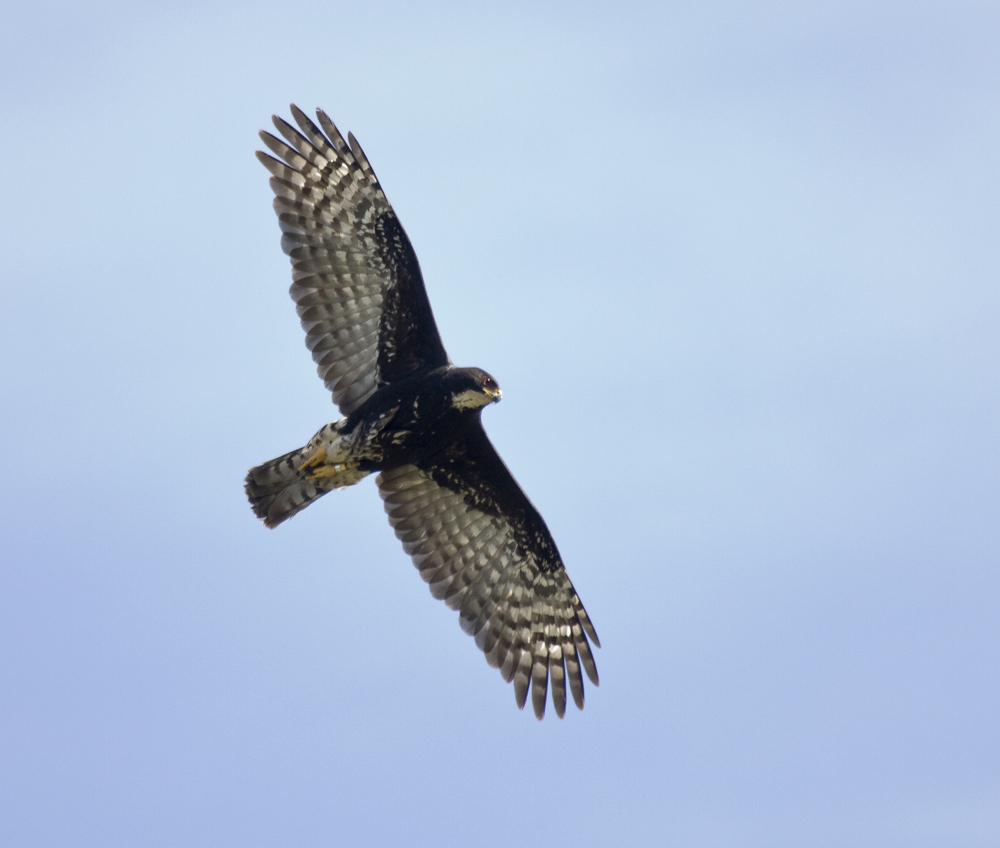Black goshawk
(Accipiter melanoleucus)

Description
Typically,both genders of the black sparrowhawk are pied black-and-white when mature;generally the plumage is predominantly black,but with a white throat,chest and belly.These white fronted individuals are known as "white morphs" who are in the majority over most of the birds' range.The "black morph" variety is generally rare,except along the coastal regions of South Africa,including the Cape Peninsula where they constitute 80% of the population.(Black sparrowhawks do not occur more than about 200–300 km north of Cape Town along the South African west coast,where there are almost no trees.) These "black (or dark) morphs",when seen perched,can be black all over,but more commonly have black fronts with a few white spots on the chest,and a white throat of variable size.In flight both morphs show white and black barring on the underside of the wings and tail (see picture below).The black morphs are not melanistic,as commonly alleged,as their plumage is not completely black,nor are they black as chicks or juveniles.There is no noticeable difference between the plumage of mature females and males,who can only be distinguished by size.The tails are cross-barred with about three or four paler stripes,and the undersides of the wings with perhaps four or five.The legs are yellow,with large feet and talons.Young chicks have mid-grey eyes and white down,but when the feathers erupt they are predominantly brown.The full plumage of juveniles is a range of browns and russets with dark streaks along the head and,more conspicuously,down the chest.Commonly there are white or light-colored spots and streaks as well,mainly on the wings.The brown plumage being a sign of immaturity,it does not attract as dangerously aggressively territorial behavior as a mature black-and-white bird would.As the young birds mature,their eyes change in color from mid-grey,though light brown,to dark red.
Taxonomic tree:







